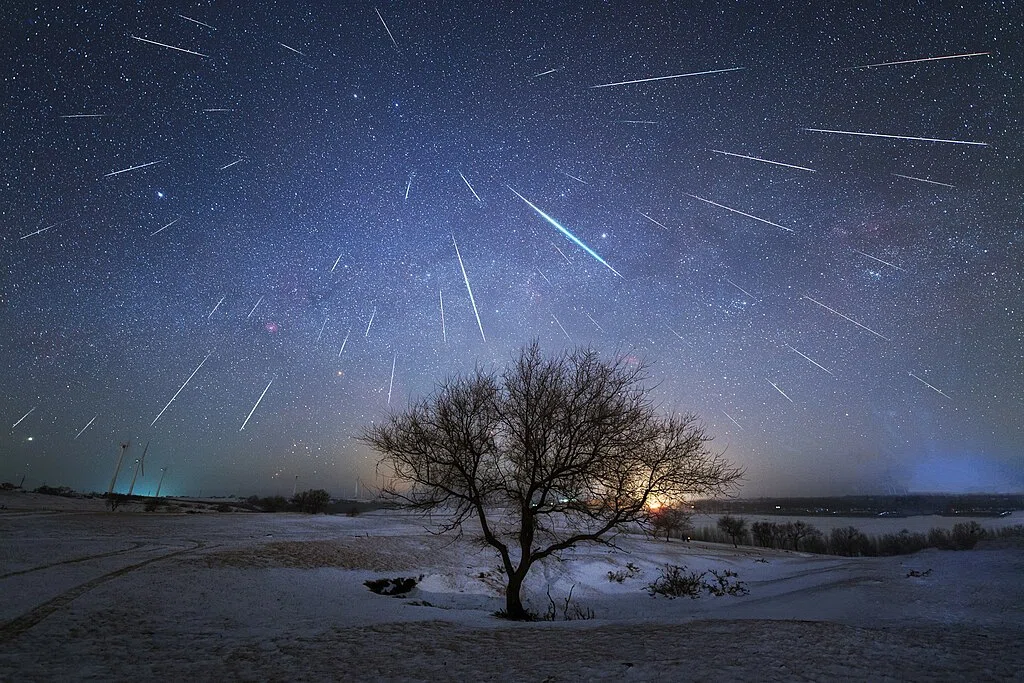As the first days of the new year unfold, the heavens themselves provide an awe-inspiring spectacle to rekindle our sense of wonder: the Quadrantids meteor shower. Known as one of the most brilliant and unique meteor displays, this celestial event is a dazzling reminder of the beauty and mystery of the universe.

A Celestial Symphony
Each year, between late December and early January, Earth passes through a dense stream of particles left behind by asteroid 2003 EH1, a "rock comet" believed to be linked to the ancient comet C/1490 Y1. The Quadrantids stand apart from many meteor showers due to their origin from an asteroid rather than a traditional icy comet, offering a rare glimpse into the remnants of our solar system's early history.
At its peak—a fleeting window lasting just a few hours—stargazers can witness up to 120 meteors per hour streaking across the sky under optimal conditions. These meteors, traveling at a blistering 25.5 miles per second, create a mesmerizing display of fireballs—intensely bright meteors that leave radiant trails of light.

What is the Quadrantid Meteor Shower?
Unlike most meteor showers, which originate from icy comets, the Quadrantids emerge from asteroid 2003 EH1. This celestial body sheds fragments that interact with Earth's atmosphere, producing bright and colorful "shooting stars." The name Quadrantids hails from the now-defunct constellation Quadrans Muralis, with the meteors appearing to radiate near Bootes, close to the Big Dipper. This distinct heritage adds to the Quadrantids' allure as a unique astronomical event.

When and How to Watch
The Quadrantids will reach their zenith in the early hours of January 3, 2025, when the waxing crescent moon will cause minimal interference. The best time to view them is before dawn, when the radiant point, located in the northern constellation Bootes (near the Big Dipper), climbs higher in the sky.
To fully immerse yourself in the Quadrantids' glory, find a dark location far from city lights, bundle up against the winter chill, and allow your eyes to adjust to the darkness. Lie back with your feet pointing northeast and let the meteors shower your field of vision. Even if you miss the peak, meteors can still be observed a few days before and after, offering a second chance to catch this celestial marvel.

Tips for Viewing Success
- Find a Dark Location: Seek areas far from urban light pollution to enhance visibility.
- Dress Warmly: January nights can be cold, so bring a warm blanket, sleeping bag, or thermos of hot tea.
- Time It Right: The peak viewing window for the Quadrantids is January 3, 2025, before dawn, with the radiant highest in the sky during the early hours.
- Stay Patient: It takes 20-30 minutes for your eyes to adjust to the darkness.
- Look Up and Relax: The Quadrantids can appear anywhere in the sky, so keep your gaze broad and relaxed.

Quadrantids: Among the Year’s Biggest Shows
While the Perseids and Geminids are often celebrated as the most popular meteor showers, the Quadrantids are right up there in scale and splendor. With rates of up to 120 meteors per hour and their remarkable fireballs, the Quadrantids stand as one of the biggest meteor showers of the year.

A Resolution Worth Keeping
This January, let the Quadrantids guide you into the new year with their fiery arcs of hope and wonder. Gather friends, family, or simply your own thoughts under the open sky, and watch as the meteors paint fleeting but unforgettable strokes across the canvas of the night.
With patience and a sense of wonder, the Quadrantids will not only dazzle your eyes but also ignite your imagination—a truly cosmic way to embrace the possibilities of the year ahead.
Clear skies and happy stargazing!

Comments · 4
M Myers
6 months agoGuest 1721387168700
6 months agoGuest 1732264114019
6 months agoManu’s Impressionen: Tradition und Kultur
6 months ago